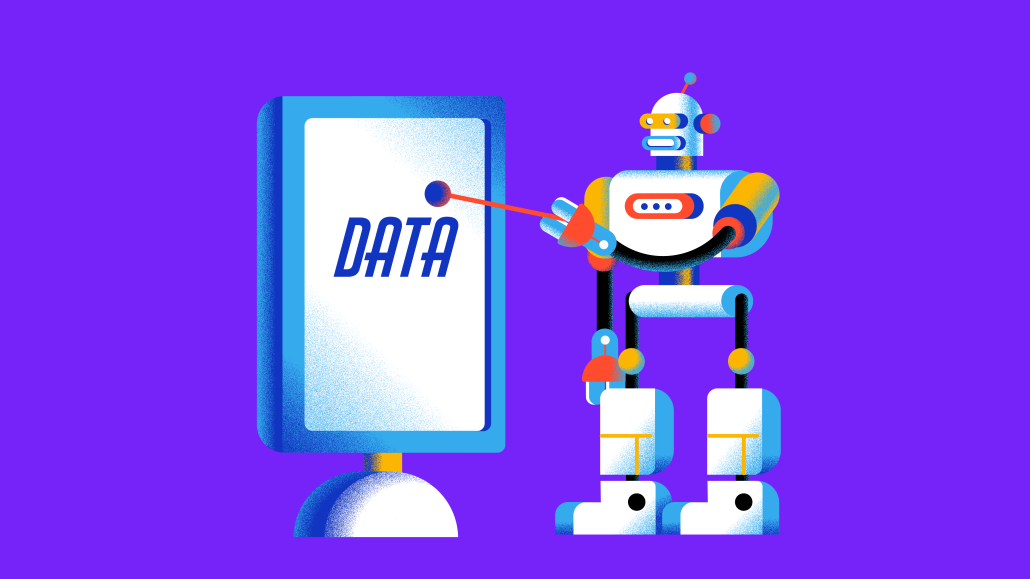Register by Jan 13 to save on passes and connect with marketers from Uber, Bose and more

Two deals stood out during the Q1 wave of consolidation in the ad tech and martech landscape, with activity from agency holding companies piquing interest: Publicis Groupe bought Lotame, while WPP acquired InfoSum.
These deals were notable as they represented holding companies writing big checks for ad tech or martech assets — let’s put the pending InterPublic Group (read Acxiom) merger with Omnicom to one side for now — rare occurrences in recent years, compared to similar M&A in the 2010s.
In both cases, the Madison Avenue stalwarts bought close bedfellows (see below), in quick succession. As one source, who requested anonymity as they were not cleared to speak with the press, said, “You usually see holdcos [sic] copy holdcos with acquisitions.”
- Lotame was already Publicis’ data partner in Europe and APAC, plus it enhances the holdco’s ID graph by 1.6 billion
- The relationship between WPP and InfoSum’s exec teams is well noted, with the U.K. holdco now proposing a “federated” vision compared to rivals
Despite Digiday’s inquiries, the official transaction amounts were not publicly disclosed. However, separate sources independently claimed both transactions represented exit amounts considerably below their respective earlier valuations. The source, who has extensive experience working for holding company agencies, told Digiday the successive purchases represented “another four to five years of the narrative they just bought.”
Meanwhile, several sources went on to elaborate how the deals represent the evolution of data clean rooms — itself a loose term to characterize platforms that enable the sharing of sensitive first-party data — which have to evolve beyond their first iterations as scaling such propositions becomes challenging.
WTF data clean rooms?
Additionally, they raise questions about how such technologies can replace the traditional holding company value proposition and whether they are best placed within such entities. Before going any further, it’s worth delving into the developments for such technologies.
Data clean rooms have become a cornerstone of modern marketing technology, enabling privacy-safe data collaboration between brands, publishers, and platforms. The term “clean room” originally described secure environments used during mergers and acquisitions, where sensitive documents were shared under strict confidentiality. Meanwhile, in marketing, this concept evolved as companies like Acxiom (which sold to IPG in 2018), Experian, and Merkle (acquired by Dentsu Aegis Network in 2016) facilitated data matching between brands and partners without exposing raw data.
Their evolution reflects the industry’s response to increasing privacy regulations and the decline of third-party cookies, especially from the mid-2010s, when digital ad spending began to account for the lion’s share of most marketers’ ad spending. The creeping tide of privacy laws, such as General Data Protection Regulations in Europe, and subsequent policy changes by large platform providers such as Apple and Google prompted this.
Per the critique of the Publicis Groupe duo, data clean rooms — or “collaboration platforms” as the current industry parlance is evolving toward — were previously often manual and lacked scalability.
- Data warehouse clean rooms: Offered by platforms like Snowflake and AWS support measurement but require expertise and shared infrastructure.
- Walled Garden clean rooms: Built by firms like Google with Ads Data Hub and Disney, these use first-party data to match audiences. They’re user-friendly but limited to the host’s ecosystem.
- Data collaboration clean rooms: Independent platforms enabling collaboration and data activation outside the clean room — flexible but costly if different vendors are involved.
- Query clean rooms: Enable data matching without moving it. Platform-agnostic and privacy-focused, they require technical skills and work best with shared identifiers across partners.
In fact, the need to reduce friction between disparate tech partners was so pressing that the IAB Tech Lab released a set of common principles and operating recommendations on using data clean rooms.
Yet, the fast-moving nature of such technologies and differing interpretations of the laws that underpin them mean definitions of such technologies can vary — Lotame, a company founded in the 2000s, never really fit the classic clean room definition — thus hindering takeup.
Implementing and maintaining clean rooms can also be resource-intensive, requiring significant investment in infrastructure and expertise. It’s also worth noting how the plug-and-play nature of clean room services offered by tech giants such as Snowflake and AWS have also impacted the uptake of “independents” — InfoSum, Lotame, and Habu (a direct competitor for InfoSum purchased by LiveRamp in 2024) — a dynamic that may have hastened the latest exits. Meanwhile, authorities continue to monitor the space, with the Federal Trade Commission noting in a Nov. 2024 blog post that such technologies “don’t automatically prevent impermissible disclosure or use of consumer data.”
Clean rooms in the holdcos
Regardless, agency holdcos are relying on such technologies to continue their value proposition to clients, especially in an era when the prospect of in-housing rears its head, and client procurement teams demand ever-thinner margins on media spend.
As mentioned, WPP claims InfoSum gives it a privacy-first, data collaboration edge, enabling secure, direct client data matching without sharing raw data — a methodology that could place it in the “query clean room” category outlined above. InfoSum’s “bunker” approach differs from rivals relying on centralized ID graphs, such as Publicis’ Lotame or IPG/Omnicom’s Acxiom — methodologies that would point to the “data collaboration” model outlined above.
Ana Milicevic, cofounder of Sparrow Advisers, notes how agencies’ offerings differ from infrastructure providers like Snowflake, etc., which are likely to view clean rooms as a revenue driver “but as part of a larger suite of data management tools (data management in the master data management sense.” She adds, “For most, this will be a feature, but a feature that requires enablement (either through managed services or some type of new agentic AI approach) to make it truly useful.”
Meanwhile, in a LinkedIn post, David Chan, managing director of Deloitte Digital, also observes how Snowflake, Adobe, and AWS are expanding clean room offerings — via acquisition, in-house builds, and platform releases — making such tech more accessible and prompting questions around buying versus partnering.
Furthermore, Robert Webster, CEO of TAU Marketing Solutions, notes that WPP’s acquisition shows that “the agency AI and data wars are live and kicking, but with a different approach, higher signal quality, but a fraction of the reach [of rivals, such as Publicis Epsilon and now Lotame].”
Lauren Wetzel, InfoSum CEO and now chief solutions officer at WPP’s GroupM, separately told Digiday her ambition was to use the holding company’s resources to help further scale its offering in a manner that can improve its reach, compared to that of rivals such as LiveRamp-owned Habu. “So, the technology of what we can offer and bring into the WPP and GroupM choreograph ecosystem, alongside all of their resources, alongside the influence they have in the industry, is letting us continue our mission,” she said. “To do it at scale with more resources and to power a vision that that we’re excited about.”
Similarly, Joe Root, CEO of Permutive — a company founded in the same era as InfoSum and began by proposing to help publisher monetize their first-party data — notes the contemporary marketplace requires an evolution of clean rooms. He further highlights the limitations of first-generation deterministic clean rooms, which struggled with scalability and operational overheads, often taking six to nine months to launch a campaign.
The shift to “Clean Rooms 2.0” powered by AI and probabilistic models addresses these issues by enabling collaboration within existing data warehouses and reaching 100% of consumers, noting that such technologies can dramatically reduce time-to-market. “It’s model-based, clean rooms that effectively enable people to reach 100% of consumers, but also, really importantly, take that collaboration down from months or potentially even years, down into kind of a couple of minutes, by leveraging like major changes in the ecosystem, like the curation platforms and the merchants of clean room infrastructure within the data warehouses,” he adds.
‘Trust isn’t given; it’s audited’
However, separate sources noted how agency-owned solutions to identity also involve inherent flaws and that many in the market are likely to challenge, or outright challenge the model; whether they be motivated by legal caution or commercial protectiveness.
Writing in ExchangeWire recently, Shirley Marschall, an industry expert with experience working on all tiers of the industry (including in-house at IT Giant Dell), notes that outlining a value proposition on paper is one thing, but winning trust from a brand is another.
“The agency/client relationship has always been complicated. Ironically, some brands will trust a vendor sales pitch over their own agency’s solutions, even when they offer similar functionality,” she later noted to Digiday, observing how compliance with regulatory standards is paramount to marketers. “When it comes to sensitive data infrastructure, that skepticism is healthy, but it should apply across the board,” she adds.
Meanwhile, Webster (who was a director of InfoSum) notes how formerly independent cleanrooms will face additional challenges as entities within holding companies. “The whole point of a clean room is you connect everybody,” he told Digiday. “Whereas now why would anybody working for Publicis want to use them [InfoSum]… you’re basically creating barriers between collaboration.”
Marschall further observes the need for cooperation and transparency in the sector if the models are to evolve. “Regardless of who’s selling the solution, brands need to ask the uncomfortable questions,” she notes. “Trust isn’t given; it’s audited.”
More in Marketing

The definitive Digiday guide to what’s in and out for advertising in 2026
Here’s the definitive guide to what’s in and out in 2026.

‘Less pitching, more listening’: What Amazon is really doing at CES
Amazon’s ad execs come to CES for their annual reality check.

After watching X’s ownership issues play out, marketers brace for TikTok whiplash in 2026
TikTok’s ownership drama has echoes of X (formerly Twitter), but ad performance has kept marketers for fleeing—for now.









